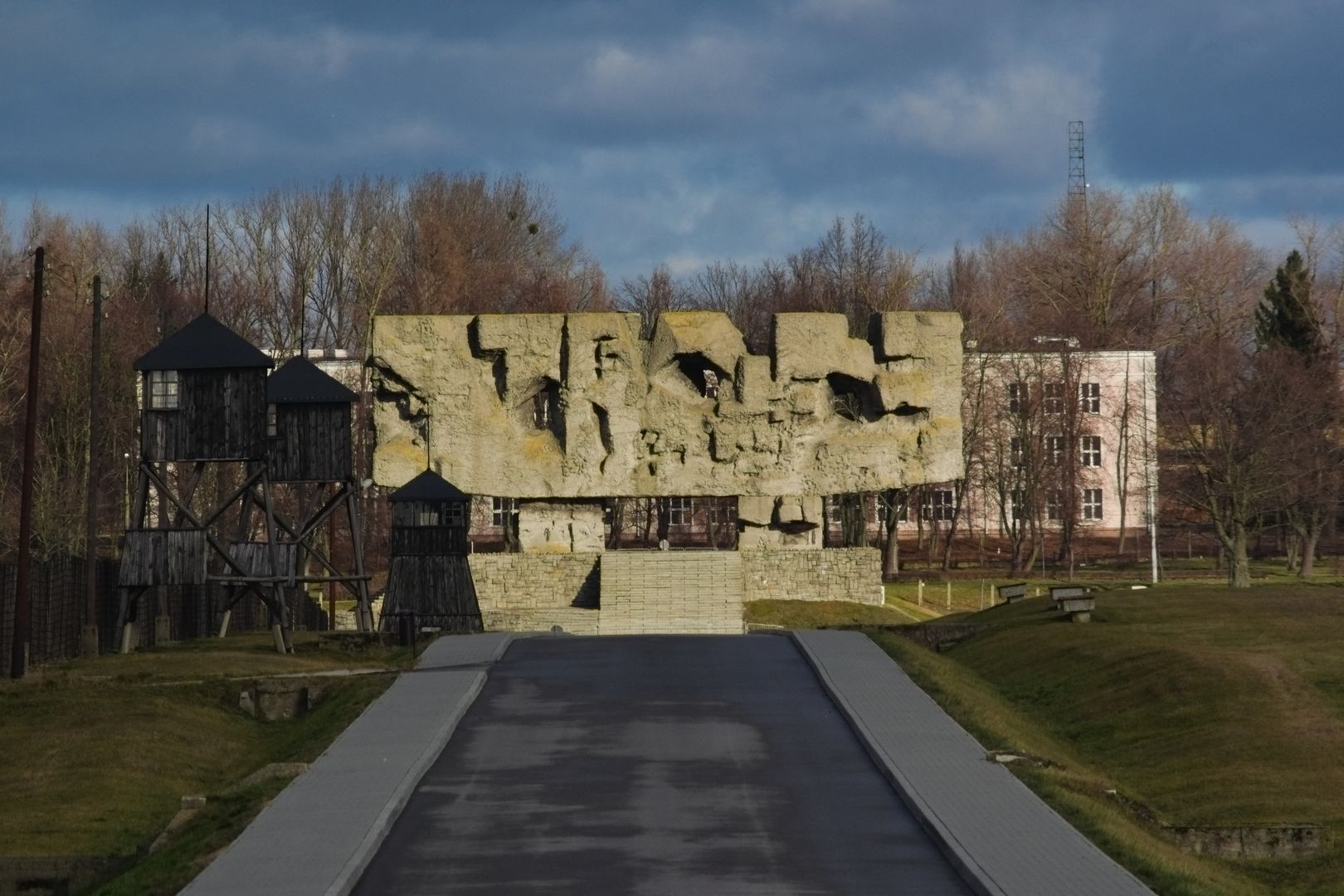Monument to Struggle and Martyrdom at Majdanek
8.22

Overview
The Monument to Struggle and Martyrdom at Majdanek, unveiled in 1969, is a monumental commemoration of the victims of the German concentration camp during World War II. Comprising the Gate and the Mausoleum, these elements are connected by the Road of Homage and Remembrance, forming an architectural complex of profound significance. The Gate, with its concrete casting measuring 10.8 × 35 × 7.6 meters, symbolizes the boundary between the world of the living and the dead, alluding to the Gates of Hell from Dante's "Divine Comedy." The Mausoleum, with its dome spanning 35 meters in diameter, houses soil containing the ashes of prisoners, transferred from an earlier mound. The expressive form of the Mausoleum evokes a Slavic burial urn. Historically, the monument serves as a crucial reference point for Holocaust remembrance, being a site of tribute to the murdered. Its unveiling gathered approximately 100,000 people, including government officials, former prisoners, and international guests. Over the years, it has become a venue for cultural and religious events, including prayers led by Pope John Paul II. Since 2007, the monument has been illuminated and serves as the official logo of the State Museum at Majdanek, as well as one of the symbols of Lublin, highlighting the region's tragic fate during World War II. In 2009, an exhibition was organized to mark the monument's 40th anniversary, and its image was featured on postage stamps. Despite issues with erosion, the monument continues to draw visitors to reflect on history.
Location
Tickets
Powered by GetYourGuide
2025 Wizytor | All Rights Reserved